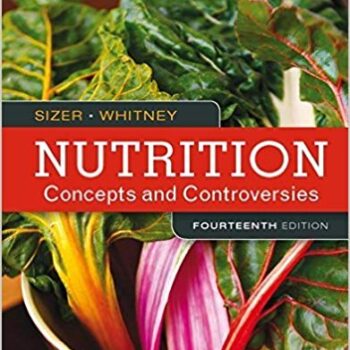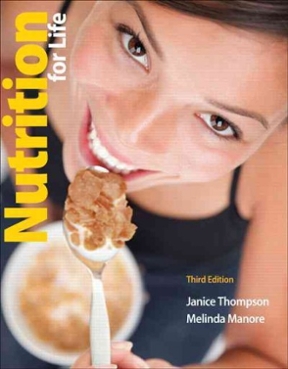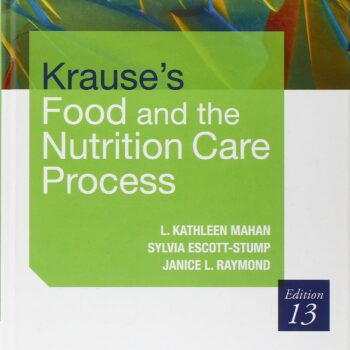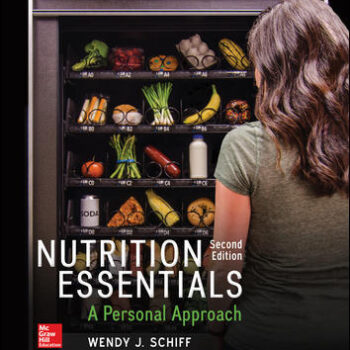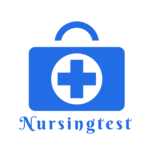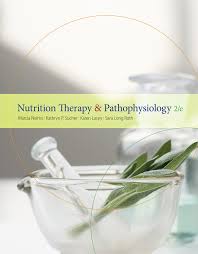
Test Bank For Nutrition Therapy And Pathophysiology 2nd Edition by Marcia Nahikian Nelms
Original price was: $75.00.$35.00Current price is: $35.00.
Digital item No Waiting Time Instant Download
As we aim to keep ourselves healthier, we must take note of our nutrition, as well as how our bodies are functioning. This is the main reason why we present to you the Test Bank For Nutrition Therapy And Pathophysiology 2nd Edition by Marcia Nahikian Nelms. This test bank is a unique resource for students and practitioners alike, who wish to take their professions and studies to different heights. It encompasses a whole range of queries and their answers on specifics about nutrition therapy and pathophysiology. It does not matter what the purpose is, whether studying for an exam or simply looking to enhance the knowledge, this test bank caters to all.
Why Our Test Bank is Essential
Ours is a test bank that has been worked over carefully so that it conforms with the outlines of the textbook, hence offering questions that are in line with what you are studying. This enables you to grasp the given material much quicker and prepares you for any examinations you might take. The Test Bank For Nutrition Therapy And Pathophysiology has prepared specific questions comprising a variety of approaches: multiple choice questions, true or false, and short answer questions. Out of these different questions, students with varying degrees of learning will be able to approach the content differently and in more than one way.
Key Topics Covered
- Basics of Nutrition Therapy: You will be able to get information on the fundamental concepts of nutrition therapy and how it can be effectively integrated into health care. Nutrition therapy is a key term that is used to depict the provision of nutrition in the form of food to treat and control disease.
- Pathophysiology: This part discusses how the pathological changes induced by the disease affect the body and how nutrition can be part of treatment. This section helps you comprehend the relationship between nutrition and the management of the disease.
- Macronutrients and Micronutrients: Understand the functions of carbohydrates, proteins, fats, vitamins, and minerals. All the nutrients are essential in maintaining health, growth, and energy.
- Digestive System and Nutrition: Learn about how food is taken into the body and how nutrients are processed. This topic addresses the stage of the food cycle that begins with eating, digestion, and absorption.
- Metabolic Processes: Study the processes involved in the conversion of food to energy in the body and what different nutrients contribute to these processes. Metabolism is that factor that assists us in understanding our food intake.
- Nutrition in Disease Prevention: Look into how appropriate diets help in disease avoidance and health promotion. This topic deals with the role of diet in chronic conditions and general health.
Benefits of Using the Test Bank
Many advantages come with using our test bank. With it, you can go over your previously learned material and test how well you have mastered it. This is important since there are parts of the subject that require greater emphasis. The questions posed here aim to test higher-order thinking, which is essential in learning intricate topics such as nutrition therapy and pathophysiology. If you routinely practice with the test bank, your information retention rate will increase and so will your confidence in the subject matter.
How to Use the Test Bank Effectively
If you want to achieve the best results with the test bank, consider using it more often during your normal studies. What you should do is the first review the related textbook chapters, and afterward, go through the test bank questions. This method will enable you to consolidate what you have been taught and pinpoint aspects that require more attention and practice. Lastly, whenever using the test bank, make an effort to create exam-like conditions so that you are better prepared for the real exams.
Summary
If you are passionate about doing nutrition studies, then purchasing the Test Bank For Nutrition Therapy And Pathophysiology 2nd Edition by Marcia Nahikian Nelms is a wise decision. The scope of the subject matter is extensive and integrates effectively responding to the course; therefore, this test bank will certainly help you in your academic endeavors. Do not let such an invaluable resource go to waste and help you progress with your studies. You are doing everything possible to advance your knowledge in nutrition therapy or pathophysiology and achieve the best possible academic results through the submission of this test bank.
Test Bank For Nutrition Therapy And Pathophysiology 2nd Edition by Marcia Nahikian Nelms
Chapter 3 – Nutrition Assessment: Foundation of the Nutrition Care Process
Multiple Choice
An. Type Page(s) Note: Under Type, K = knowledge and A = application.
a K 35 1. Determination of _____ involves an attempt to project potential nutrition problems based on the client’s current health status.
a.nutritional risk
b.nutritional status
c.nutrition screening
d.nutritional assessment
c K 35-36 2. Which of the following is not a component of a nutritional assessment?
a.estimation of protein and energy needs
b.determining potential drug and nutrient interactions
c.patient filling out hospital nutrition forms
d.nutrition-focused physical exam
d K 36 3. The process of identifying patients, clients, or groups who may have a nutrition diagnosis and benefit from nutritional assessment and intervention by an RD is defined as:
a.nutrition-focused physical examination.
b.nutritional assessment.
c.estimating nutritional needs.
d.nutrition screening.
b A 36 4. If your patient reports that he/she has nausea after eating and vomits one time per day, this type of data is considered to be:
a.objective.
b.subjective.
c.biochemical.
d.clinical.
a A 36 5. If you read a patient’s medical record and obtain information such as previous medical or surgical history, this type of data is considered to be:
a.objective.
b.subjective.
c.biochemical.
d.clinical.
c K 37 6. Which of the following is an important consideration in obtaining dietary information from a patient?
a.the dietitian’s credentials
The type of supplements that your facility offers
The rapport between the RD and the patient
How much the patient is eating during the admission
b K 37 7. Which of the following is not a component of a thorough diet history?
a.patient’s food preferences
b.patient’s previous medical history
The patient’s use of complementary and alternative medicine
patient’s cultural, religious, and ethnic beliefs
c K 38,40 8. Which of the following tools for gathering dietary information is prospective?
a.24-hour recall
b.food frequency questionnaire
c.food record
d.usual intake pattern
d K 44-45 9. Which of the following statements is not true?
a.The AI, RDA, UL, and EAR are all part of the DRI.
b.One method of assessing a patient’s diet is by comparing it to the USDA’s MyPyramid.
c.The DV was established to assist the consumer in interpreting nutrition information.
d.Comparison using the USDA’s MyPyramid will quantify the client’s macro- and micronutrient intake.
c K 46 10. Which of the following methods of measuring or estimating height requires the use of a calculation?
a.recumbent length
b.use of stadiometer
c.knee height
d.arm span

